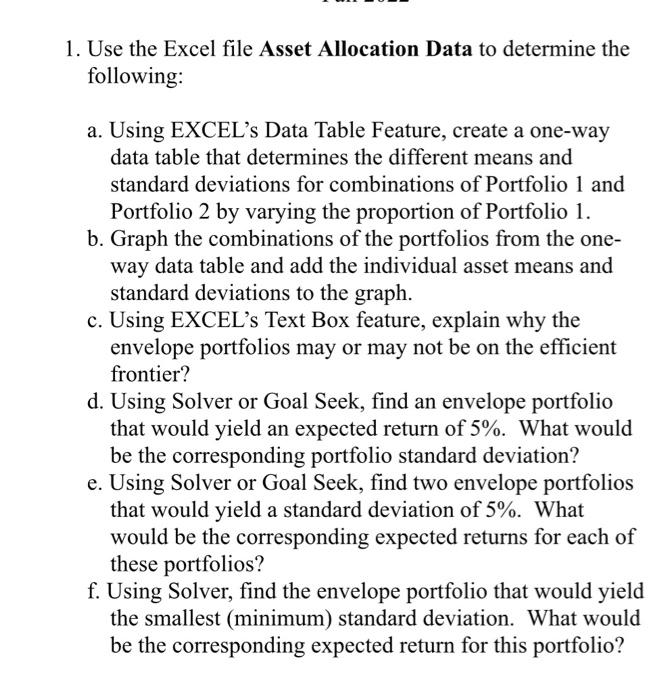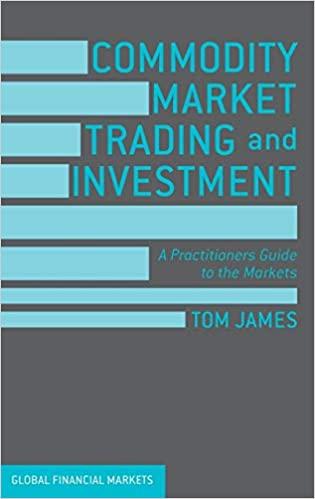Answered step by step
Verified Expert Solution
Question
1 Approved Answer
. Use the Excel file Asset Allocation Data to determine the following: a. Using EXCELs Data Table Feature, c reate a one-way data table that


. Use the Excel file Asset Allocation Data to determine the following:
a. Using EXCELs Data Table Feature, create a one-way data table that determines the different means and standard deviations for combinations of Portfolio 1 and Portfolio 2 by varying the proportion of Portfolio 1.
b. Graph the combinations of the portfolios from the one-way data table and add the individual asset means and standard deviations to the graph.
c. Using EXCELs Text Box feature, explain why the envelope portfolios may or may not be on the efficient frontier?
d. Using Solver or Goal Seek, find an envelope portfolio that would yield an expected return of 5%. What would be the corresponding portfolio standard deviation?
e. Using Solver or Goal Seek, find two envelope portfolios that would yield a standard deviation of 5%. What would be the corresponding expected returns for each of these portfolios?
f. Using Solver, find the envelope portfolio that would yield the smallest (minimum) standard deviation. What would be the corresponding expected return for this portfolio?
Step by Step Solution
There are 3 Steps involved in it
Step: 1

Get Instant Access to Expert-Tailored Solutions
See step-by-step solutions with expert insights and AI powered tools for academic success
Step: 2

Step: 3

Ace Your Homework with AI
Get the answers you need in no time with our AI-driven, step-by-step assistance
Get Started


